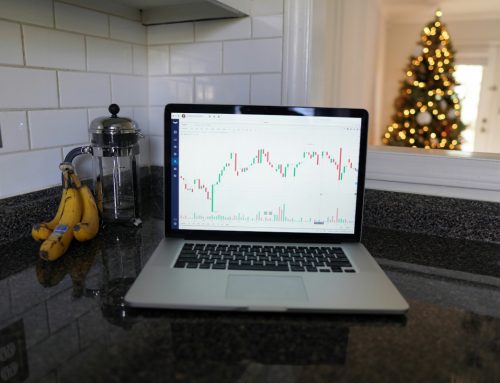Position trading vs swing trading – which of these trading styles is right for you? The answer will mainly depend on how long you want to hold an asset before capturing profits. But as you’ll soon discover, this is just one of the many factors affecting your ideal trading strategy.
Swing traders capitalize on short-term swings in an asset’s price over the course of a few days, to as long as a few weeks. Position traders, on the other hand, hold their positions much longer – sometimes for months or years.
Don’t worry – in this in-depth guide, you’re going to learn all about swing trading vs position trading. By the end of this discussion, you’ll feel confident as to which strategy best suits your unique preferences. You’ll also learn how to get started with the highest rate of success possible – regardless of the strategy you choose. Let’s not waste any more time! We’ll begin by breaking down and defining the two styles themselves.
Featured Courses:
Position Trading vs Swing Trading: What Is The Difference?
To help you better understand which of these two trading strategies is right for you, we have to first discuss the differences between them. And to do that, you must have a surface-level understanding of what each style entails. We’ll kick things off by defining swing trading and giving you some basic information on this strategy.
A Brief Explanation Of Swing Trading
Swing traders seek opportunities in a stock’s short-term price swing in the overall trend of the stock’s price. While a stock may continue to rise over the course of 6 months, there will be quick drops in the price for a few days or weeks – before it rebounds back up and continues its trend. This is where swing traders see their opportunity – they can get in at the bottom of that dip and ride it back up for a few days, or even a few weeks before it dips again.
This is the beauty in swing trading – while you don’t earn profits quite as quickly as day trading or scalping, you can complete a few trades a week to earn income. But, it requires far less time commitment than other styles – making it a great choice for those looking for supplemental income that won’t interfere with their job.
Want to learn more about how swing trading works? We have a plethora of great resources for those interested in learning how to swing trade. If you’re just getting started, our guide to swing trading for beginners is worth checking out. For now, let’s move on to a brief explanation of position trading.
A Brief Explanation Of Position Trading
In our comparison guide between swing trading and investing, you learned that the main difference between these strategies is the holding period. The holding period of swing trading is very short – just a few days in some cases, or at most a few weeks. And while position traders don’t maintain positions for years on end (or a lifetime) as investors do, they do hold positions much longer than swing traders. Sometimes, position trading entails holding a position for weeks to months.
That means you won’t pay much mind to daily noise – instead, you’re looking at long-term outcomes. A good way to think about position trading is a happy medium between swing trading and long-term investing. You can use position trading as a means for preparing for your future. However, one key difference between position trading and long-term investing is that position traders may go either short or long on their position. Investors, on the other hand, only really go long.
With position trading, you spend even less time in front of a screen than swing traders do. This makes it a great approach for those who have a full-time job and can’t afford to spend an hour or two watching charts every day.
Position Trading vs Swing Trading: Which Is Right For You?
Now that you have a better understanding of each of these two trading styles, you’re probably wondering which is right for you. Keep in mind – there is no right answer. And the fact of the matter is you don’t necessarily have to choose just one or the other. You can create a well-rounded trading strategy using both styles simultaneously.
However, if you’re just getting started, we encourage you to go all-in on one style. And to help you determine whether it should be position trading vs swing trading, let’s break down what you need to know – starting with profits.
Swing Trading Provides Quicker Profits Than Position Trading
Both swing trading and position trading provide substantial profit potential. However, swing trading no doubt offers quicker profits than position trading. In fact, many swing traders are capable of paying their monthly bills through their trades. You could execute a few trades a week and if you’re trading with large enough positions, earn a full-time living.
While position traders may execute trades as quickly as a few weeks, this style typically entails a longer holding period. Sometimes, position traders will hold their position for months – if not years. As such, you should look at position trading as a strategy to help you prepare for your future rather than provide supplemental income in the present day. This is a long-term wealth strategy.
Position Trading Provides Larger Profits Per Trade Than Swing Trading
There is a bit of give and take between these two styles as each has its unique pros and cons. The quick returns of swing trading are great – but, some traders prefer the larger profit percentages you can earn through position trading. Because you hold positions for longer durations, there is more time for the price to continue rising.
With that said, the opposite is true – there is more risk involved with position trading as you could get stuck holding a stock that drops and never recovers. Much of this can be alleviated through proper technical analysis and risk management, though – so don’t let this thought deter you from position trading.
Position Trading Requires Less Time Than Swing Trading
Neither swing trading nor position trading requires nearly as much time in front of charts as day trading or scalping. However, position trading does take slightly less time as you don’t have to try and execute trades in such a short-term price swing.
You’re more concerned with the fundamentals of assets as a position trader. You look at opportunities that make sense not just technically, but fundamentally too. As such, you don’t have to worry as much about monitoring technical indicators to the extent that swing traders do.
The Approach To Finding Opportunities Differs
Speaking of technical and fundamental analysis, the manner in which you find stocks varies between swing trading vs position trading. Swing traders care about one thing, and one thing only: finding an opportunity in a short-term price swing. A stock’s price could be trending down over the course of a few months, and you can make a killing by swing trading that stock. This means you really only need to worry about technical analysis. You’ll want to learn all about the best indicators for swing trading to set yourself up for success.
With position trading, on the other hand, you’re looking at longer-term plays. That means you need to be concerned with not just technical analysis – but fundamental analysis as well. You’ll need to pay much closer attention to company and industry trends and news to stay up to date.
Swing Trading vs Position Trading: The Verdict
When it comes to position trading vs swing trading, it really comes down to the points mentioned above. But, we can simplify them even further for you to help you make an easy decision:
- Do you want to generate supplemental income right now? Stick with swing trading.
- Do you want to prepare for your future by generating wealth over time? Stick with position trading.
And like we briefly mentioned earlier – you don’t necessarily have to choose one of these styles over the other. They can complement each other very well. You can allocate a portion of your portfolio towards swing trading to generate supplemental income to help with bills or enhance your lifestyle. Meanwhile, you can prepare for your retirement with long-term position trading.
But if you had to pick just one style to start with right now? We’d recommend swing trading. It’s far easier to get started swing trading with a small account. You can stack up quick wins and grow your account fast to help move the needle more when you do ultimately begin position trading. Once you weigh the swing trading pros and cons, you’ll see that there are all sorts of advantages to this approach – and very few drawbacks.
Final Thoughts On Swing Trading vs Position Trading
That concludes our breakdown on swing trading vs position trading. Ultimately, there is no right or wrong answer. One strategy is not inherently better than the other. It comes down to how much time you have to trade, and how quickly you want profits.
Whether you decide to go with position trading or swing trading, one thing is for sure: you can set yourself up for a high rate of success by investing in the right tools. One tool we recommend every trader has in their arsenal is a stock forecast website. These types of websites offer software that is capable of helping you effectively time the market – so you know exactly when to enter your position and when to close it. This helps mitigate risk and maximize profits.
And, there is no stock forecasting solution more accurate and simple than VectorVest. We can give you a clear buy, sell, or hold recommendation on any given stock. You also gain insights into the overall trend of the market – an invaluable piece of information. Finding stocks is brain dead easy, too – just pull up our hottest picks and see if they fit your trading style.
Trading with VectorVest will transform the way you look at investing forever. Try it out risk-free for 30-days – you’ll never look back!
Featured Courses:
What you should do next…
- Get our latest blogs delivered right to your inbox, subscribe to our newsletter.
- The market moves fast! Get our most current evaluation of this stock with our FREE stock analysis tool.
- Looking for stock picks? Not sure if now is the right time to buy/sell? For a limited time, enjoy the full benefits of a 30-day subscription to VectorVest for only $9.95 (usually up to $139/month) . Get access to our full list of screeners showcasing our top stock picks that tell you exactly what to buy, when to buy, and when to sell.









Leave A Comment